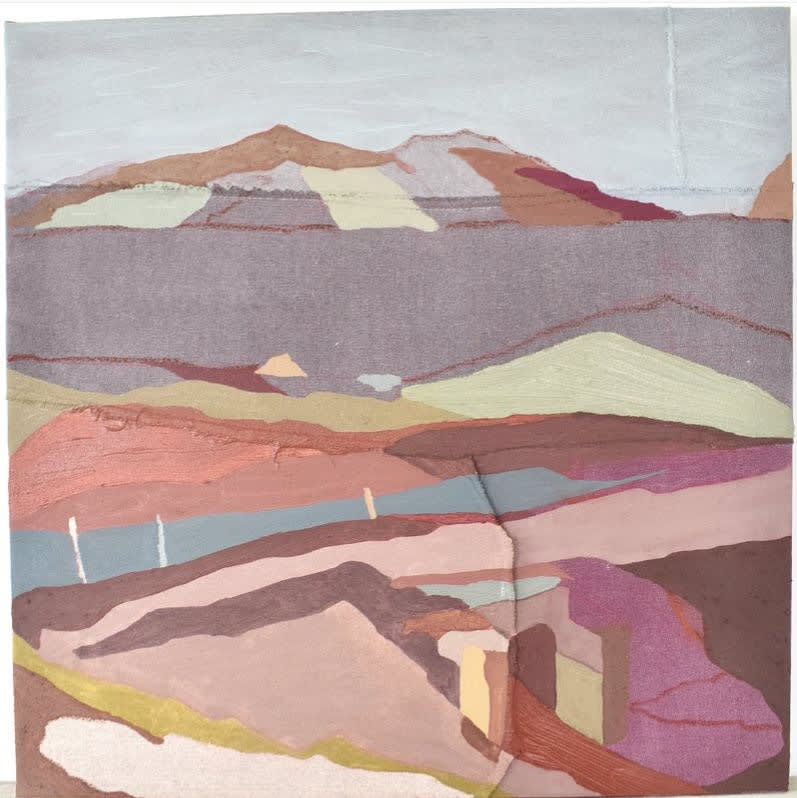Siobhan McLaughlin is an artist and freelance curator based in Glasgow. Since graduating from MA Fine Art at Edinburgh University in 2019, she has been awarded the SSA Wilhelmina Barns-Graham Award, a film commission from the Tate’s British Art Network, a Visual Art Scotland Cornwall Exchange Residency and the Stephen Palmer Travel Award. Alongside exhibiting regularly, McLaughlin’s curatorial practice focuses on creating opportunities for sharing and opening up private, inaccessible spaces to the public. In 2022 she curated a major private collections exhibition, Alan Davie: Beginning of a Far-off World, at Dovecot Studios, Edinburgh, and is currently working with Dovecot to showcase the work of 10 recent graduates from Scottish art schools, with the aim of providing a platform for emerging artists at the start of their careers.
Her art practice combines personal experience with compositional and sustainable devices, such as sewing remnant materials, to create non-traditional landscape paintings. Through drawing, printmaking, painting and installation McLaughlin explores themes of place, memory, sustainability and ecology:
“My paintings start by walking, slowing down to encounter the nuances of the landscape and gathering a spectrum of site-specific colours affected by light, weather and time. This has developed a sustainability and care focused practice, centered on material, form and a drive to capture the tangibility of landscape.
Walking along the Black Isle coast during my time at Cromarty Arts Trust was an interesting experience, in contrast to walking into the mountains in the Scottish Cairngorms that has informed my previous work. The power and unfolding nature of this landscape, the edges and movement of land/sea intrigued me. The historical cultural identity of this coastal town – the red pigment residue of a failed mining well, the imposing oil rigs and the immense rock formations of MacFarquhar’s Bed – has really influenced my work.
Prioritising slow-looking and care over high-tech processes is important to my practice. While in Cromarty I gathered local remnant materials like fisherman’s smock cloth and discarded cotton. Stitching together these fabrics to create the base for painting embeds the stories of these materials within the landscape of the work. As well as materials, I gathered earth and plants while walking to create pigment. Cromarty based artist Thomas Keyes introduced me to processing the yellow woad flower, which results in a beautiful blue hue. For years I’ve been mixing colour palettes that evoke the colour of the land in my paintings, but here I began to create paint from the land. By using these colour palettes rooted in place, I’m highlighting often overlooked aspects of the landscape to translate a more sustained experience that reflects on memory, care and ecology. The resulting work asks ‘what do we really see when we slow down to look and how can this help us care for our land and each other?’.”

